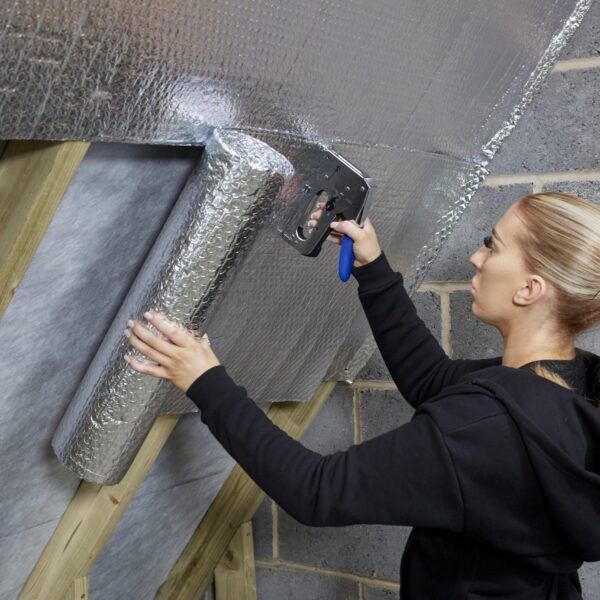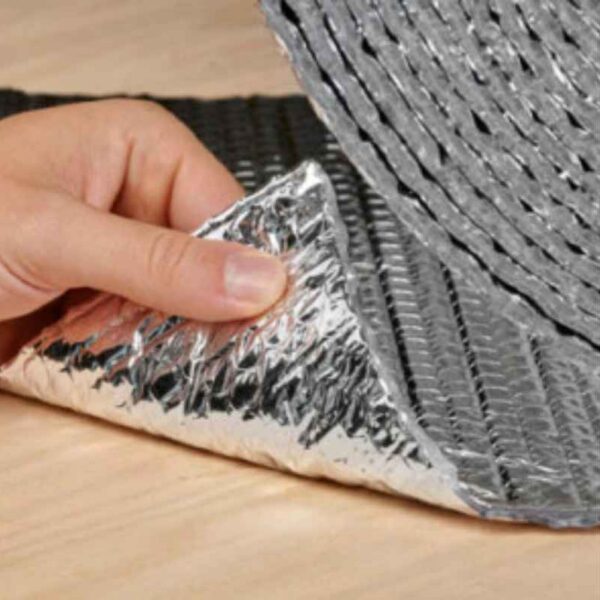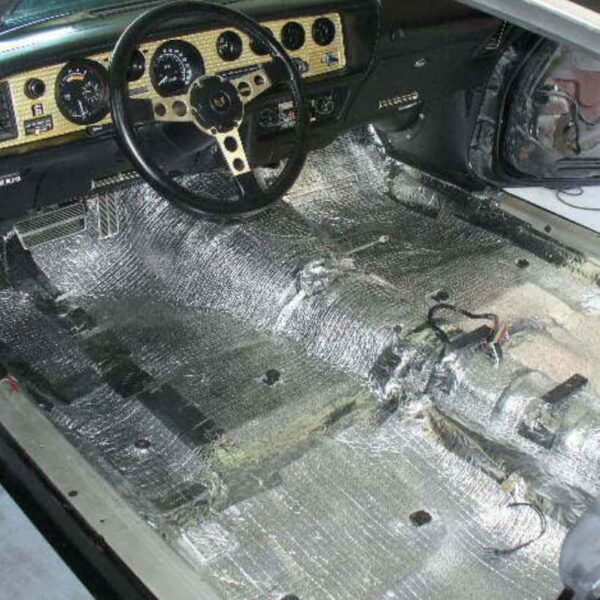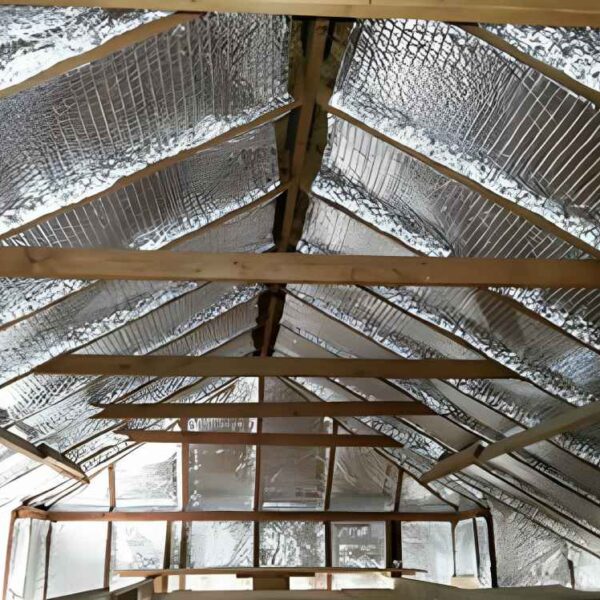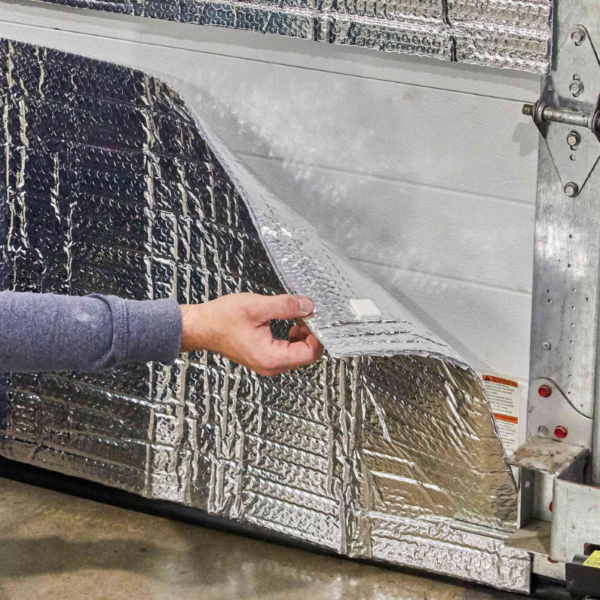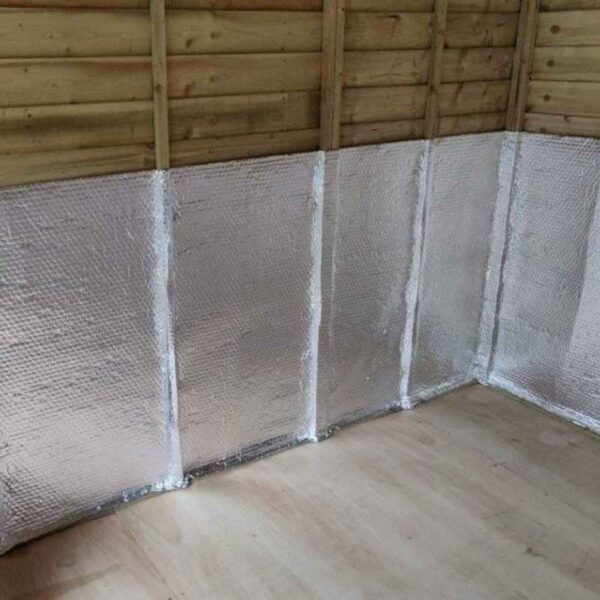

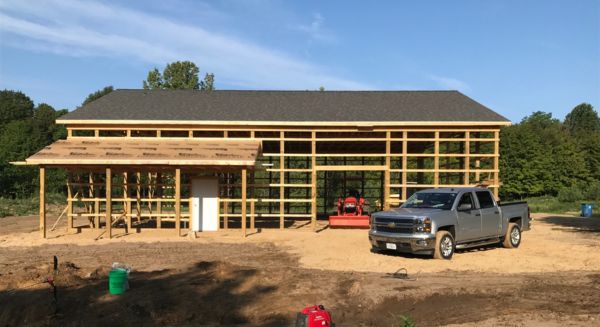
Heat Proof
Bubble insulation is a type of insulation that uses small air pockets trapped between two layers to create a barrier against heat transfer. This type of insulation is often used in buildings and other structures to help keep them cool in hot weather
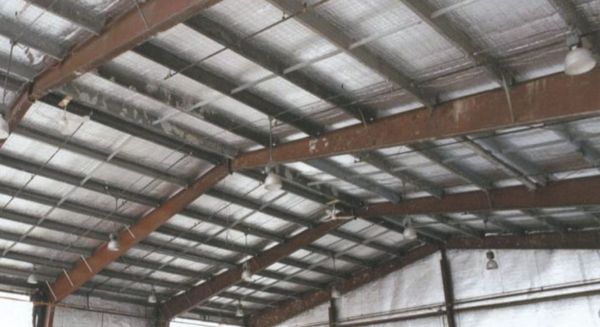
Water Proof
When using bubble insulation for waterproofing, it’s important to ensure that the insulation is properly installed and sealed. This can help to prevent any gaps or openings that could allow moisture to seep through
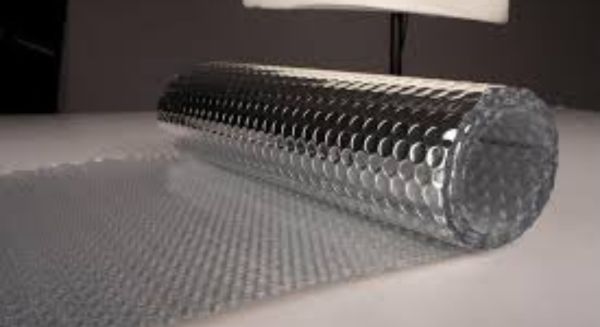
Sound Proof
Soundproof bubble insulation is also easy to install, and can be cut to size using a utility knife or scissors. It is lightweight and flexible, making it easy to work with in tight spaces. It can be installed using adhesive and staples.
About Us
Bubble Insulation is a company that specializes in providing top-quality bubble insulation solutions to its customers. With a focus on innovation, efficiency, and customer satisfaction, bubble insulation in Delhi is dedicated to meeting the insulation needs of homeowners and businesses alike.
The company has built a reputation for excellence by leveraging the latest technology and materials to create bubble insulation Sheets that are both effective and affordable. By using advanced manufacturing techniques, Bubble Insulation is able to produce insulation that is lightweight, easy to install, and highly effective at reducing energy costs and improving indoor comfort.
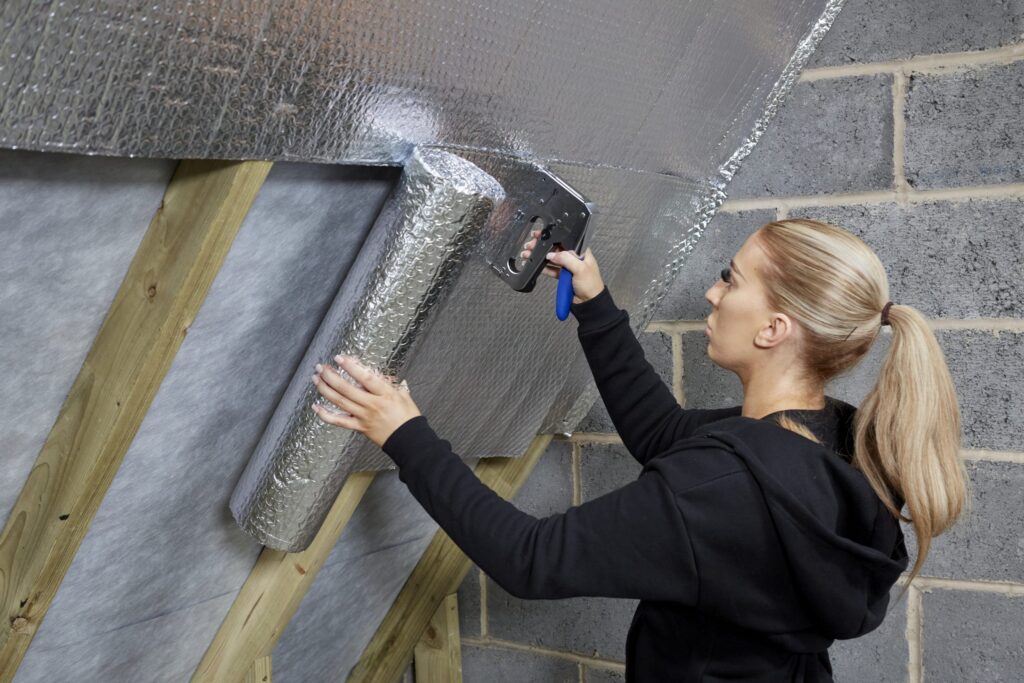
At Bubble Insulation, the team is committed to providing exceptional service to every customer. Whether you are a homeowner looking to reduce your energy bills, or a business owner looking to improve the energy efficiency of your building, Bubble Insulation Sheet has the expertise and resources to help you achieve your goals.
So if you are looking for a reliable, experienced insulation company that can help you save money on your energy bills and improve the comfort of your home or business, look no further than Bubble Insulation. With their exceptional products and commitment to customer satisfaction, you can trust Bubble Insulation to deliver the best bubble insulation installation.
OUR MISSION
Bubble Insulation is to provide high-quality insulation solutions to our customers, helping them to achieve greater energy efficiency, comfort, and cost savings in their homes or businesses.
OUR VISION
We envision a world where energy consumption is minimized, and every building is insulated with the best possible materials to maintain thermal comfort and reduce environmental impact.
Are you tired of your high energy bills and uncomfortable indoor temperatures? If yes, then bubble insulation can be the solution to your problems. Bubble insulation is a type of thermal insulation that helps in reducing heat transfer by trapping air within its pockets. In this write blog for Bubble Insulation, we will discuss everything you need to know about bubble insulation, its benefits, how it works, and installation process.
TABLE OF CONTENT
- What is Bubble Insulation?
- How Does Bubble Insulation Work?
- Types of Bubble Insulation
- Benefits of Bubble Insulation
- Installing Bubble Insulation
- Bubble Insulation for Different Areas
- Frequently Asked Questions
Introduction
Bubble insulation is a type of thermal insulation that can be installed in the walls, floors, or ceilings of a building. It consists of two layers of polyethylene plastic with air bubbles trapped in between. This type of insulation can be a cost-effective solution for homeowners and business owners who want to reduce their energy bills and improve the comfort of their indoor space.
bubble insulation Sheet can be used in various applications, including residential homes, commercial buildings, and industrial facilities. It is a popular choice for insulation because of its high R-value, which measures the resistance to heat transfer. In this write blog for Bubble Insulation, we will discuss everything you need to know about bubble insulation.
What is Bubble Insulation?
Bubble insulation, also known as reflective insulation, is a type of thermal insulation that helps in reducing heat transfer by trapping air within its pockets. The two layers of polyethylene plastic with air bubbles in between act as a barrier to prevent the transfer of heat. The reflective surface of the insulation reflects radiant heat, which can help keep your indoor space cooler in the summer and warmer in the winter.
How Does Bubble Insulation Work?
Bubble insulation Sheet works by using a reflective surface to reflect radiant heat away from your home or building. Radiant heat is the heat that is transferred through the air without any physical contact. Bubble insulation traps air within its pockets, which helps to prevent heat transfer by conduction and convection. The trapped air also provides an additional layer of insulation to keep your indoor space comfortable.
Benefits of Bubble Insulation
There are many benefits of using bubble insulation in your home or building, including:
1. Energy Savings: Bubble insulation installation can help you save money on your energy bills by reducing the amount of energy needed to heat or cool your indoor space. It can also help extend the life of your heating and cooling systems by reducing the amount of work they need to do.
2. Comfortable Indoor Temperature: Bubble insulation can help maintain a comfortable indoor temperature by reducing the amount of heat transfer in and out of your home or building. This can help eliminate hot or cold spots in your indoor space.
3. Easy Installation: Bubble insulation is easy to install and can be done by a professional or a DIY enthusiast. It does not require any special tools or skills, and it can be installed in a fraction of the time it takes to install traditional insulation.
4. Fire Resistant: Bubble insulation is fire-resistant, which means it can help protect your home or building in the event of a fire.
5. Eco-Friendly: Bubble insulation is made from recyclable materials and can help reduce your carbon footprint.
Bubble Insulation for different Areas
Bubble insulation can be used in a variety of areas to improve energy efficiency and reduce noise levels. Here are some common applications for Bubble insulation:
Walls: Bubble insulation installation can be installed between wall studs to reduce heat loss and improve soundproofing. It is especially useful in exterior walls that are exposed to cold temperatures.
Attics: Attics can be a major source of heat loss in a home. Bubble insulation can be installed on the underside of the roof decking to reduce heat transfer and keep the attic space warmer.
Floors: Bubble insulation can be installed beneath floors to reduce heat loss and improve soundproofing. It is commonly used in crawl spaces and basements to keep these areas warmer and drier.
HVAC ducts: HVAC ducts can be a major source of noise pollution in a home. Bubble insulation can be wrapped around the ducts to reduce noise levels and improve energy efficiency.
Pipes: Pipes that carry hot water can lose heat as they travel through a building. Bubble insulation can be wrapped around the pipes to reduce heat loss and improve energy efficiency.
Doors and windows: Bubble insulation Sheet can be applied to doors and windows to reduce air leakage and improve energy efficiency. It is an inexpensive alternative to replacing draft doors and windows.
Sound studios: Bubble insulation is often used in sound studios to create a soundproof environment. It can be installed on walls, floors, and ceilings to prevent sound from escaping or entering the space.
In summary, bubble insulation can be used in a variety of areas to improve energy efficiency and reduce noise levels. Its versatility and ease of installation make it a popular choice for homeowners and builders alike.
Air Bubble Insulation
Air bubble insulation, also known as reflective insulation, is a type of insulation that uses trapped air to resist heat transfer. It is made of a thin, flexible plastic sheet with small air bubbles embedded between two layers of aluminum foil. The air bubbles trap air, which acts as an insulator. The aluminum foil reflects radiant heat, reducing the amount of heat that can enter or leave a building.
Benefits of Air Bubble Insulation:
- R-value: Air bubble insulation has an R-value of approximately 3.5 per inch of thickness. This means that it can resist heat flow at a rate of 3.5 thermal resistances per square foot per degree Fahrenheit per hour.
- Lightweight: Air bubble insulation is very lightweight, making it easy to transport and install.
- Moisture resistance: Air bubble insulation is resistant to moisture, making it a good choice for use in humid climates.
- Flexibility: Air bubble insulation is flexible, making it easy to conform to irregular shapes.
- Durability: Air bubble insulation is durable and can last for many years.
Aluminium Air Bubble Sheet
Aluminium air bubble sheet is a versatile material that provides a combination of insulation and cushioning. It is made of a thin, flexible aluminum foil sheet that is laminated to a layer of bubble wrap. The air bubbles provide insulation, while the aluminum foil reflects heat. This makes aluminium air bubble sheet a good choice for a variety of applications, including:
- Insulating buildings
- Protecting fragile items during shipping
- Providing cushioning for flooring
- Creating packaging materials
Aluminum Foil Air Bubble Insulation Sheet
Aluminum foil air bubble insulation sheet is a lightweight, flexible, and easy-to-install insulation material that is commonly used in residential and commercial buildings. It is made of a thin layer of aluminum foil laminated to a layer of plastic bubble wrap. The air bubbles provide insulation by trapping air, which is a poor conductor of heat. The aluminum foil reflects radiant heat, further reducing heat transfer.
Here are some of the benefits of using aluminum foil air bubble insulation sheet:
- High R-value: Aluminum foil air bubble insulation sheet has an R-value of approximately 3.5 per inch of thickness. This means that it can resist heat flow at a rate of 3.5 thermal resistances per square foot per degree Fahrenheit per hour.
- Lightweight: Aluminum foil air bubble insulation sheet is very lightweight, making it easy to transport and install.
- Moisture resistance: Aluminum foil air bubble insulation sheet is resistant to moisture, making it a good choice for use in humid climates.
- Flexibility: Aluminum foil air bubble insulation sheet is flexible, making it easy to conform to irregular shapes.
- Durability: Aluminum foil air bubble insulation sheet is durable and can last for many years.
Air Bubble Insulation
Air bubble insulation, also known as reflective insulation, is a type of insulation that uses trapped air to resist heat transfer. It is made of a thin, flexible plastic sheet with small air bubbles embedded between two layers of aluminum foil. The air bubbles trap air, which acts as an insulator. The aluminum foil reflects radiant heat, reducing the amount of heat that can enter or leave a building.
Benefits of Air Bubble Insulation:
- R-value: Air bubble insulation has an R-value of approximately 3.5 per inch of thickness. This means that it can resist heat flow at a rate of 3.5 thermal resistances per square foot per degree Fahrenheit per hour.
- Lightweight: Air bubble insulation is very lightweight, making it easy to transport and install.
- Moisture resistance: Air bubble insulation is resistant to moisture, making it a good choice for use in humid climates.
- Flexibility: Air bubble insulation is flexible, making it easy to conform to irregular shapes.
- Durability: Air bubble insulation is durable and can last for many years.
FAQs
Bubble insulation is a type of insulation that uses a layer of air-filled bubbles between two layers of reflective material to reduce heat transfer.
The air-filled bubbles in bubble insulation create a barrier that prevents heat from being transferred through the material. The reflective layers also help to reflect radiant heat away from the insulation.
Bubble insulation can help to reduce heat loss or gain in a building, which can lead to lower energy bills and improved comfort. It is also lightweight, easy to install, and can be used in a variety of applications.
Bubble insulation can be used in walls, floors, roofs, and other areas of a building where insulation is needed. It is also commonly used in packaging materials to protect products during shipping.
Bubble insulation is generally considered safe to use. However, it is important to follow proper installation procedures and safety guidelines to ensure that the insulation is installed correctly and does not pose a fire hazard.
Bubble insulation is typically installed by stapling or gluing it in place. It is important to follow the manufacturer’s instructions for installation to ensure that the insulation is installed correctly and effectively.
The lifespan of Bubble insulation installation can vary depending on the quality of the material and the conditions in which it is installed. However, most bubble insulation products are designed to last for many years with proper installation and maintenance.

Amazing experience
I recently installed bubble insulation in my attic, and I'm amazed at the difference it has made. My home is so much warmer and cozier now, and I've noticed a significant reduction in my heating bills. I highly recommend bubble insulation to anyone looking to improve their home's energy efficiency.
Akshay Sharma

Great Material
I live on a busy street, and the noise pollution was becoming unbearable. I decided to install bubble insulation in my bedroom walls, and I can't believe the difference it has made. I can sleep soundly now without being disturbed by traffic noise
Rajat kalra

Perfect Insulation
I run a home recording studio, and I needed to create a soundproof environment. I installed bubble insulation on the walls and ceiling, and I'm blown away by how effective it is. I can record and mix music without any outside noise interference. Bubble insulation has transformed my studio into a professional-grade recording space
Mayank Sharma

Best material ever
I've always had problems with condensation in my basement, but since installing bubble insulation on the walls, I haven't had any issues. The insulation has kept the space dry and comfortable, and I'm so glad I made the investment
Bhavesh Patel

Good Insulation
I have a drafty front door that was costing me a fortune in heating bills. I applied bubble insulation to the door, and the difference was immediate. My home is much warmer now, and I'm saving money on my heating bills. Bubble insulation is an affordable and effective solution to drafty doors and windows.
Manish Yadav

